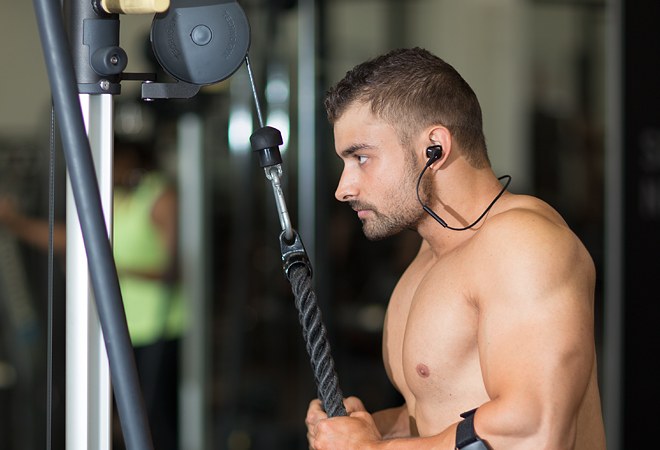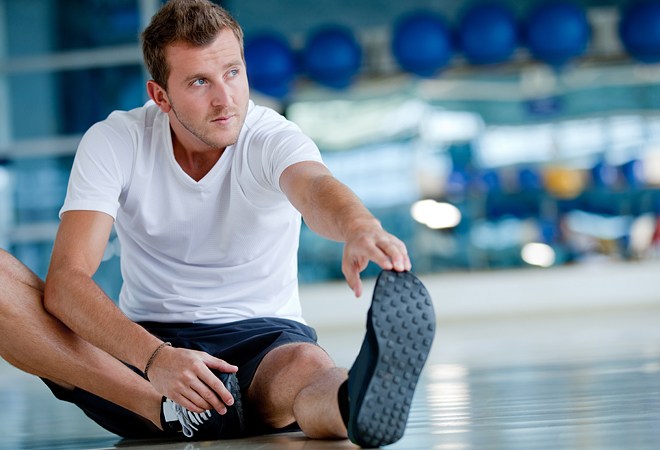There’s a new workout fad every month, a new must-take supplement every year, and a new reason you’re not shedding those extra pounds every time you open a men’s magazine. It’s enough to make your head spin. To get an effective workout, perhaps you should turn to science. Here is a collection of scientifically proven tricks that will get you in better shape. Want a more efficient and effective trip to the gym? Try these workout hacks.

Exercise Between 2:30 pm and 8:30 pm
If you follow a normal sleep cycle, the best time to train will be in the late afternoon or early evening. Studies have shown that this is the optimal time based on the body’s circadian rhythm and core temperature. That said, you can get an even more personalized recommendation by finding out when your resting heart rate is at its peak. Find that out and hit the gym at that time. Source

Listen to Dance Music
Whether you’ve attended an underground party with some big name DJ spinning or not, you may want to toss on some EDM when you’re about to throw around some weights. A study conducted by Dr. Costas Karageorghis, deputy head of the School of Sport and Education at Brunel University, London, found the fast, rhythmical bass of a dance track with many beats per minute is the perfect bench press soundtrack. By inducing alpha brain wave activity, a fast dance number can trick you into being less tired. Source

Skip the Stretching
If you spend 10 minutes before every workout stretching out your calves, glutes, and hammies, you’re probably wasting your time. Stephen B. Thacker, the late director of the epidemiology program at the Centers for Disease Control, stated that, after five studies, his team couldn’t find any benefit to a pre-workout stretch. While it’s disputed by some, there’s a good chance you won’t cut down on injuries by doing static stretches. That said, don’t confuse stretching with warming up. Research shows that a warm up that gets your blood pumping can prep muscles for exercise and help ward off injuries. Source

Rest for 3 Minutes Between Sets
If you’re lifting heavy weights, you’re probably not resting long enough between sets. Jeffrey M. Willardson, part of the Kinesiology and Sports Studies Department at Eastern Illinois University, states the the rest period between sets when power training should be about 3 minutes. If the person working out has not done a lot of strength training, that rest period should be closer to 4 to 5 minutes. So take a breather; it’s good for you. Source

Do These Exercises
On one hand, exercise seems very simple. Work up a sweat or tire out your muscles and you probably had a good workout. On the other hand, exercise can be extremely complicated. There are so many factors that come into play that the average person can’t possibly figure out the perfect workout for them. That said, science can help. These are the exercises that stimulate the most muscle fibers in a wide range of body parts. If you’re looking to blast your back, stick to deadlifts, chin-ups, and bent-over rows. Want toned shoulders? Go shoulder press and lateral raises. Just follow this guide. Source

Eat Eggs After You Workout
Skip the protein shake and go Rocky on a few eggs. (OK, don’t go full Rocky, as it’s actually better if you cook the eggs, but you get the idea.) When it comes to post-workout foods, the incredible, edible egg is tough to beat. One egg has 6 grams of highly bioavailable protein, thanks to the amino acids present. Eggs are packed with vitamins and minerals that you’ll rarely find in other sources. Source

Eat a Pre-Workout Meal and a Post-Workout Meal Withing 3-4 Hours
If you’re looking to put on some muscle, and you workout at 45-90 minute clips, you’d be wise to scarf down some protein before you hit the gym and after you leave. But don’t dillydally; if those two protein-rich meals or snacks aren’t withing 3 to 4 hours of each other, you won’t see optimal results. This study, which was originally published in the Journal of the International Society of Sports Nutrition, details not only why this is the ideal time frame, but it also can help you figure out just how much protein you should consume. If you ingest lots of your protein through anticatabolic meals, you can stretch that window to up to 6 hours. Source




